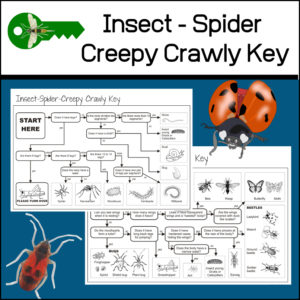Showing 41–60 of 70 resultsSorted by latest
-
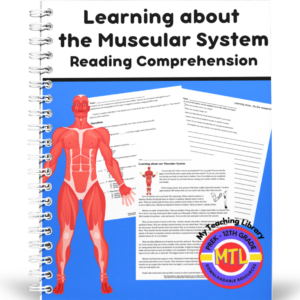 $2.00Buy Now
$2.00Buy NowStudents will read about the muscular system and learn facts such as how many muscles are in the body, what are muscle fibers, the three different types of muscles and much more. After reading and learning about the body / human anatomy, students will answer multiple choice questions.
Also included: A research and writing activity that may be assigned at your discretion!
Answer Key provided.
Reading level:
Flesch-Kincaid Grade Level: 5.3
Linsear Write Formula : 5.1 -
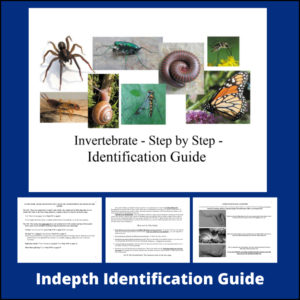 $3.00Buy Now
$3.00Buy NowThis 21 page resource will take students step by step through a guided identification process for invertebrates. This key is designed for 6th – 12th grades.
-
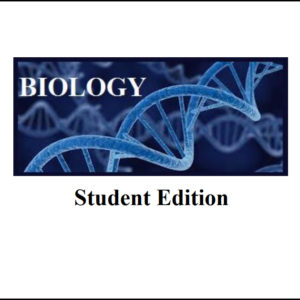 $9.99Buy Now
$9.99Buy NowComplete Biology 1 Curriculum – Student Edition for High School
-
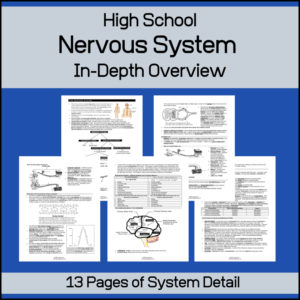 $2.50Buy Now
$2.50Buy NowThis 13 page resource is a very detailed overview of the nervous system and is meant for High School level students.
-
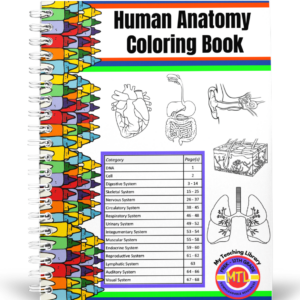 $9.75Buy Now
$9.75Buy NowThis 68-page anatomy coloring book has been designed for 5th-12th grade classrooms (Health, Science, Anatomy, Biology, Physiology).
Categories:
- DNA
- Cell
- Digestive System
- Skeletal System
- Nervous System
- Circulatory System
- Respiratory System
- Urinary System
- Integumentary System
- Muscular System
- Endocrine System
- Reproductive System
- Lymphatic System
- Auditory System
- Visual System
-
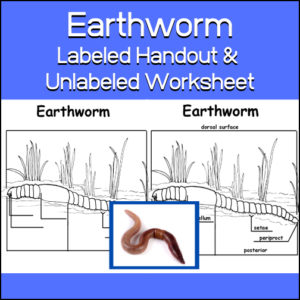 $1.00Buy Now
$1.00Buy NowThe earthworm is an annelid. The annelids , also known as the ringed worms or segmented worms, are a large phylum, with over 22,000 species which includes earthworms, ragworms, and leeches. This resource includes a labeled handout (showing the following parts: mouth, prostomium, clitellum, setae, periproct) and a worksheets for students to label.
-
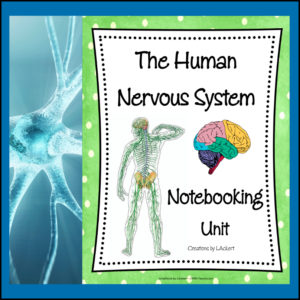 $5.00Buy Now
$5.00Buy NowThis BIOLOGY / HEALTH / ANATOMY / BODY SYSTEMS resource centers around the human nervous system and is a notebooking project unit. This interactive 56 page resource will require students to perform research and can be used independently or along side your curriculum.
-
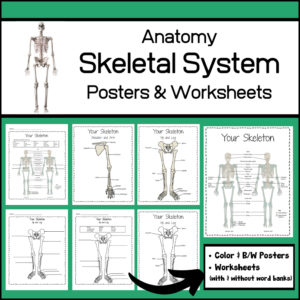 $3.00Buy Now
$3.00Buy NowThis ANATOMY / BIOLOGY / HEALTH resource includes 3 sets of human skeleton posters and worksheets to help you teach the names of major bones. Each set has a color poster (great for bulletin boards) and b/w poster (great for student handouts) and each worksheet comes with and without a word bank. Bones: Skull (cranial portion, facial portion), clavicle, scapula, sternum, ribs, vertebral column, hip bones (pelvic girdle), humerus, ulna, radius, carpals, metacarpals, phalanges, femur, patella, tibia, fibula, tarsals, metatarsals.
-
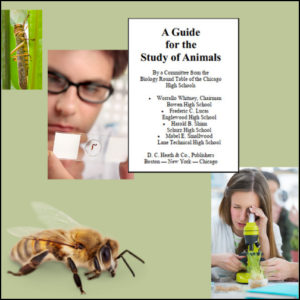 $2.50Buy Now
$2.50Buy NowThis is a downloadable copy of the book. (138 pages)
About the book: A Guide for the Study of Animals is a classic zoology guide (1911) which is intended for pupils in 9th-12th grades. It was prepared by the authors at the request of the Biology Round Table, an association composed of the teachers of Biology in the Chicago High Schools. The book is basically a Biology / Zoology Lab activity guide. Please note that this is not a ‘textbook’ but a lab activity book. (See description for further details.) -
 $1.00Buy Now
$1.00Buy NowThe resource is a 15 question quiz that will assess student understanding of the following structures / organelles of a plant cell: cell wall, mitochondria, chloroplast, cell membrane, vacuole, Golgi apparatus, lysosomes, rough endoplasmic reticulum w/ ribosomes, smooth endoplasmic reticulum, nucleus, nucleolus, peroxisome, cytoskeleton
-
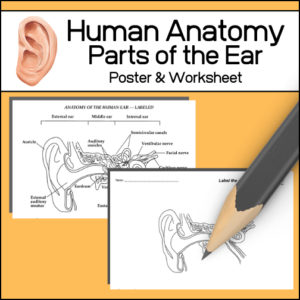 $1.50Buy Now
$1.50Buy NowStudying the human ear? This resource includes…
- – Poster with the following parts labeled (auricle, auditory ossicles, semicircular canals, vestibule nerve, facial nerve, cochlear nerve cochlea, vestibule, eardrum, Eustachian tube, external auditory meatus)
- – Student worksheet to label
-
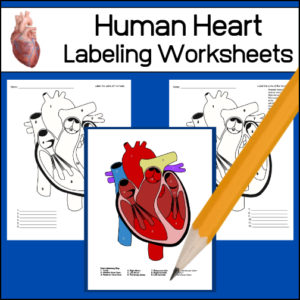 $1.00Buy Now
$1.00Buy NowTwo worksheets for students to label of the human heart. One with a word bank and one without. Answer key provided.
-
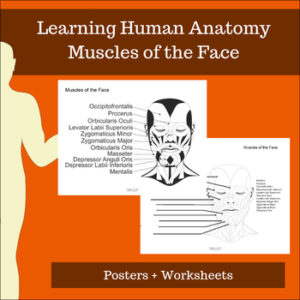 $2.00Buy Now
$2.00Buy NowMuscles of the Face – Learning Human Anatomy will be exactly what you need if you are looking for a easy to read posters as well as a labeling worksheet for students.
This resource actually comes with two worksheets, one with and one without terms. (You choose if you want your students to completely remember the names or if they need the terms to help them. )
-
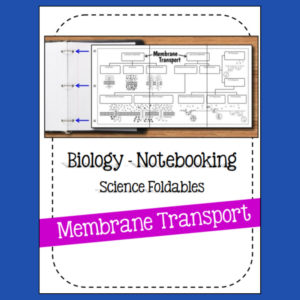 $3.00Buy Now
$3.00Buy NowHigh School Biology Notebook resource!
Students will learn all about the cell membrane. Terms include: phospholipid, phospholipid bilayer, integral protein, peripheral protein, cholesterol, glycolipid, oligosaccharide/sugar chain, glycoprotein, transport, attachment and recognition, receptor for signalling, enzymatic activities
-
 $1.00Buy Now
$1.00Buy NowMuscles of the Arm – Learning Human Anatomy will be exactly what you need if you are looking for a easy to read poster as well as a labeling worksheet for students.
This resource actually comes with two worksheets, one with and one without terms. (You choose if you want your students to completely remember the names or if they need the terms to help them. )
-
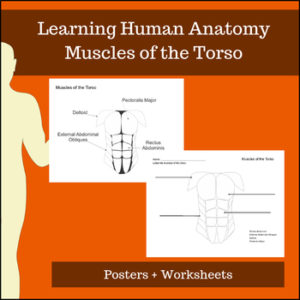 $1.00Buy Now
$1.00Buy NowMuscles of the Torso – Learning Human Anatomy will be exactly what you need if you are looking for a easy to read posters as well as a labeling worksheet for students.
This resource actually comes with two worksheets, one with and one without terms. (You choose if you want your students to completely remember the names or if they need the terms to help them. )
-
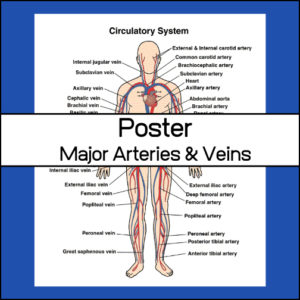 $1.50Buy Now
$1.50Buy NowThis classroom poster displays the major arteries (20) and veins (15) of the human circulatory system.
-
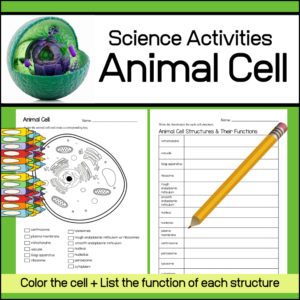 $2.00Buy Now
$2.00Buy NowThis Science / Biology resource includes 2 activity worksheets for students to help them review the structures / organelles of an animal cell and the main function(s) of each. Structures /organelles include: centrosome, plasma membrane, mitochondria, vacuole, Golgi apparatus, ribosome, lysosomes, rough endoplasmic reticulum, smooth endoplasmic reticulum, nucleus, nucleolus, peroxisome, cytoplasm
-
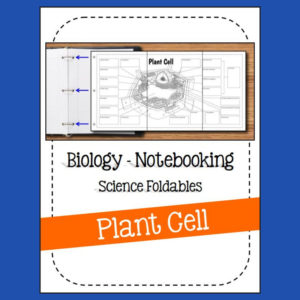 $3.00Buy Now
$3.00Buy NowHigh School Biology Notebook resource!
Students will learn the following terms: plasmodesma, amyloplast, peroxisome, Golgi body, Golgi vesicles, tonoplast, central vacuole, mitochondrion, chloroplast, cytoskeleton, nuclear pores, nuclear membrane / envelope, DNA in nucleoplasm, nucleolus, nucleus, rough endoplasmic reticulum, smooth endoplasmic reticulum, ribosomes, cytoplasm, cell wall, cell / plasma membrane


